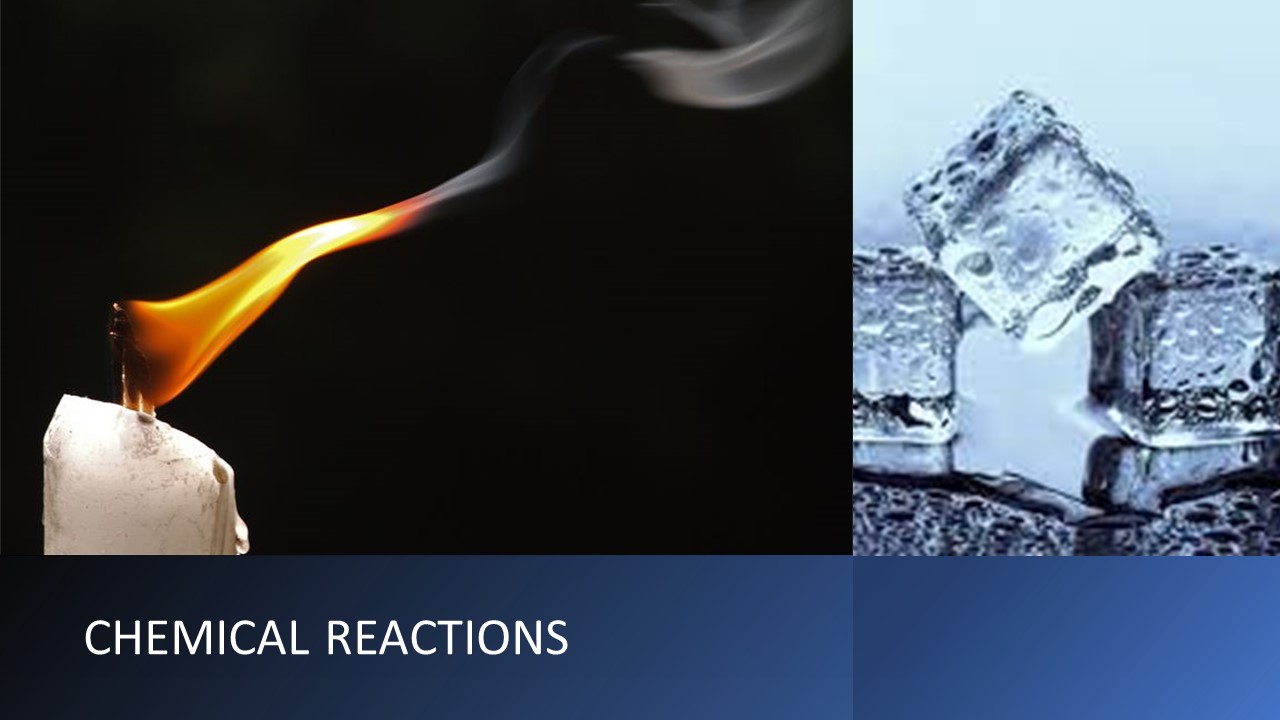Description
Introduction
This theme will enable children to understand that several oxides, carbonates and
hydrates on heating are converted to other compounds. Oxides of metals and non-metals have basic and acidic character respectively. They will also realize and appreciate that there are different types of reactions such as combinations, decomposition, displacement, double displacement, exothermic and endothermic reactions.
Burning a fuel is called combustion,
combustion is a chemical process in which a substance reacts rapidly with oxygen and gives off heat. The original substance is called the fuel, and the source of oxygen is called the oxidizer. The fuel can be a solid, liquid, or gas.
For combustion to occur three things must be present: a fuel to be burned, a source of oxygen, and a source of heat. As a result of combustion, exhausts are created and heat is released. We can control or stop the combustion process by controlling the amount of the fuel available, the amount of oxygen available, or the source of heat.
Types of Chemical Reactions
Combination or Synthesis reactions
Combination or Synthesis reactions
A combination or synthesis reaction is one, where a new product is synthesised by a combination of two or three reactants.
( X + Y → XY)
Decomposition reaction
Decomposition reaction is one, where one compound decomposes or breaks into two or more different products.
(XY → X + Y).
Single Displacement reaction
When a cation or an anion is exchanged from a compound, this is called as single displacement reaction.
X + YZ → XZ + Y
Double displacement reaction
The anions are exchanged between two compounds or salts. Such reactions result in a different combination of cations and anions, at the end.
XY + AZ → XZ + AY
Oxidation
Addition of Oxygen atom, removal of a Hydrogen atom or loss of electrons.
Reduction
Addition of hydrogen atom, removal of oxygen, the gain of electrons.
Free
Free
Free access this course
-
LevelIntermediate
-
Last UpdatedMarch 23, 2022
-
CertificateYes
Hi, Welcome back!
Material Includes
-
Live Interactive classes with in-class doubt solving
-
Weekly Test and Quiz with instant tracking for progress
-
Revision of the course after testing
-
Fortnightly Parents and Tutor interactions
-
Expert monitoring of student's learning progress
-
Daily communication over call, whatsapp and mail
-
3 hours on-demand video
-
4 downloadable resources
-
Access for entire Academic Year
-
Access on mobile and Desktop
-
Assignments and review of the same
-
Tests and Correction by Board paper checkers
-
Certificate of completion and Live tracking with Grade book
Course Duration:
0
Course level:Intermediate
Enrolled:0
About Course
In this section will learn the following chapters:
1.TYPES OF REACTION
2.REACTIVITY SERIES
3.TYPES OF PROCESSES
4.CLASSIFICATION OF OXIDES
Course Curriculum
CHEMICAL REACTION
TYPES OF CHEMICAL REACTIONS
-
05:00
-
05:00
-
01:55
-
06:00
-
01:51
-
QUIZ – CHEMICAL CHANGES AND REACTIONS – PRELIMINARY TEST
-
QUIZ – CHEMICAL CHANGES AND REACTIONS – WHAT ARE CHEMICAL CHANGES?
-
QUIZ – CHEMICAL CHANGES AND REACTIONS – BALANCING CHEMICAL REACTIONS
NEUTRALIZATION
REACTIVITY SERIES
Student Ratings & Reviews

No Review Yet


